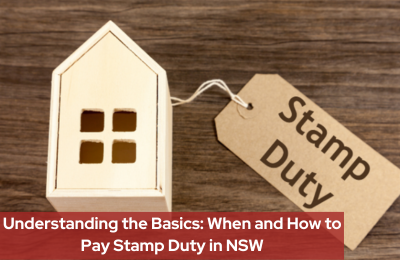What to Look for During a Pre-Settlement Inspection in NSW
It’s quite an exciting milestone to settle down in your dream home. As you approach the pre-settlement inspection phase, it’s best to approach it with a discerning eye. This final walkthrough plays a pivotal role in ensuring that your new home aligns with your expectations and standards before finalising the purchase. To help you navigate this step, we have compiled a checklist of what to look for during a pre-settlement inspection in NSW.
What is a Pre-settlement Inspection?
A pre-settlement inspection is a final inspection of your property before settlement. It is important to ensure that your property is in good condition before settlement. This way you can avoid any potential problems down the track.
This encompasses a thorough inspection of the property, inside and out. You should check for any damage or defects and make sure that all repairs have been carried out as agreed. If there are any outstanding issues, you should raise them with your conveyancer so that they can be dealt with prior to settlement.
It is also good to check that all items listed in the contract of sale are present at the property. This includes aspects such as light fittings, carpets and blinds. If anything is missing, you should notify your conveyancer so that they can arrange for it to be replaced prior to settlement. Once you have completed your inspection, you should provide a written report to your conveyancer.
What to Look for During a Pre-Settlement Inspection
As a home buyer, there are certain things to look for during a pre-settlement inspection in NSW. This checklist will help ensure that you are prepared for your inspection and know what to expect.
- Review the property contract: Before your inspection, review the property contract. Make sure that you understand all of the conditions that must be met prior to settlement.
- Check for any damage: Once you arrive at the property, conduct a thorough walk-through to check for any damage that may have occurred since you signed the contract. If you notice any damage, be sure to document it and mention the same.
- Check for building code compliance: During your inspection, also take some time to check that the property meets all current building codes and standards. This is especially important if you are planning on making any changes or renovations to the property after settlement.
- Have a realistic expectation: A pre-settlement inspection is not the final assessment of the property. Rather, it’s an opportunity for you to identify any potential issues that could impact settlement. If everything looks good during your inspection, then the process will likely go on without any problems.
Key Elements to Assess During a Pre-Settlement Inspection
Let’s explore more things to check during your property inspection. By looking into these aspects, you’ll get a clearer picture of the property’s overall condition and make a confident decision. Here are some of them:
Structural Damage
Before finalising a property purchase, carrying out a pre-settlement inspection helps in assessing for any structural damage. However, many buyers are unsure of exactly what they should be looking for. Here is a comprehensive list of things to look for when carrying out a pre-settlement inspection in NSW:
- Check the roof for leaks or damage, including guttering and downpipes
- Inspect walls for cracks or signs of movement
- Ensure doors, windows, and drafts are in check
- Examine flooring for signs of wear or damage
- Scrutinise ceilings for cracks or sagging
- Check bathrooms for leaks around fixtures and taps
- Inspect the kitchen, ensuring appliances and plumbing are functional
Environmental Hazards
Environmental hazards, such as contaminated soil or water, can pose health risks and decrease the property’s value. If any of these are present, you should have the property inspected by a qualified professional before proceeding with the purchase.
Asbestos: It is a known carcinogen and can be found in many older homes. Exposure to asbestos fibres can lead to severe respiratory diseases, including lung cancer and mesothelioma. Look for any materials that may contain asbestos, such as insulation, flooring, or roofing materials.
Lead paint: Properties built before the 1980s may have lead-based paint. Ingesting or inhaling lead particles can lead to lead poisoning, especially dangerous for children. Inspect painted surfaces for peeling, chipping, or deteriorating paint layers.
Mould and mildew: Moisture can create issues that often lead to the growth of mould and mildew. This can trigger allergies and respiratory problems. Look for signs of mould growth, such as musty odours, discoloured patches, or water stains.
Radon gas: Radon is a radioactive gas that can seep from the ground into homes. Prolonged exposure to high levels of radon gas can increase the risk of lung cancer. Consider testing for radon gas using specialised detectors.
Pest infestations
Pest infestations can cause extensive damage to your property. This issue can be costly to rectify, so it’s best to catch them early. Most pest infestations can be prevented with regular inspections and maintenance. However, if you do find evidence of pests during your pre-settlement inspection, be sure to have the issue addressed before taking possession of the property.
Security
Your safety and the security of your property should never be compromised. Evaluate the property’s overall security measures and consider whether additional steps are necessary. Here are some things to look for:
- Ensure that there are secure doors/windows
- Evaluate the security system for signs of tampering
- Test smoke and carbon monoxide detectors
- Identify potential hazards like loose railings or exposed wiring
- Verify the functionality of an alarm system
Electrical Systems
There are also some specific electrical items you should keep an eye out for. Inspect the electrical system for functionality and safety. Outdated or faulty electrical systems can pose a fire hazard. Here is a checklist of electrical items to inspect during your pre-settlement inspection:
- Check outlets and switches for damage
- Test all light fixtures
- Inspect cords and wiring for damage
- Examine the breaker box for proper labelling and damage
- Arrange an electrician’s inspection if needed
Plumbing Systems
Plumbing systems are one of the most important components of any home. Assess if they are in good working order before you move in. Addressing plumbing problems early can prevent water damage and mould growth. Here is a are some signs you can keep an eye out for:
- Check all taps and pipes for leaks
- Ensure that the hot water system is working properly
- Flush all toilets to check for proper operation
- Test all showers and baths for water pressure and temperature
- Inspect all gas appliances for leaks
- Check the condition of the septic tank (if applicable)
Such an inspection is a critical step to ensure all aspects of the property transaction are in order and meet your expectations. When it comes to pre-settlement inspections in NSW, choosing the right professionals to assist you can go a long way. At SD Conveyancing, we offer expert pre-settlement inspection services. This way,you’ll have a clear understanding of the property’s condition before finalising the purchase.
With years of experience and a commitment to client satisfaction, we’re here to guide you through the inspection process and provide you with the peace of mind you deserve. Call us on 0432 599 373 or email us at seema@sdconveyancing.au to book an appointment.







